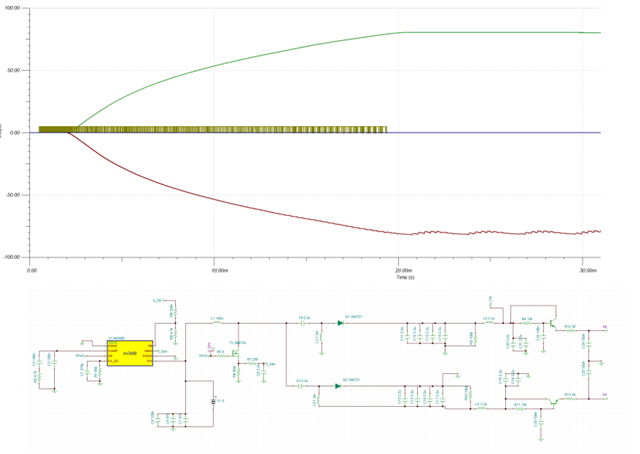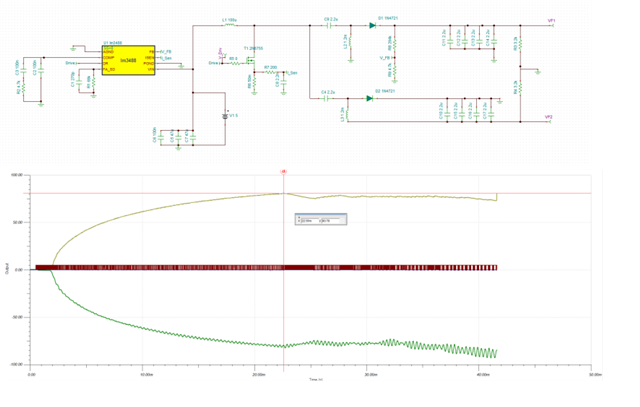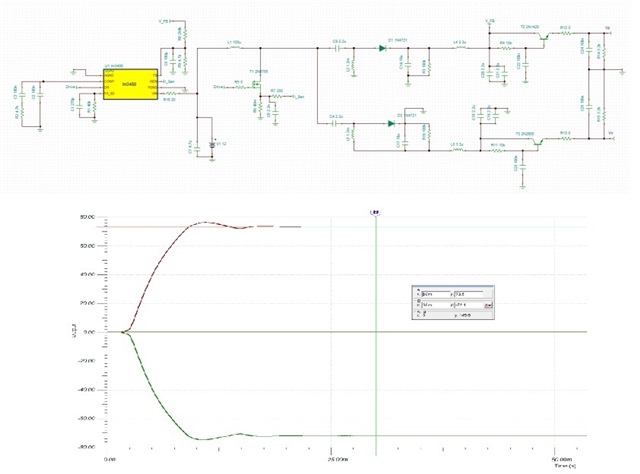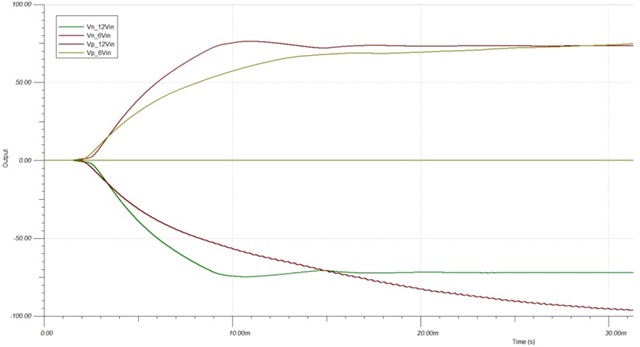Other Parts Discussed in Thread: TIDA-010057, LM5155
Tool/software:
Hello,
We are designing one own Medical product in which we need +/-80V and from Ultrasound application, we found it with LM3488.
Based on the application circuit, we prepare the PSPICE in TINA and below are the results,
Title: Clarification Needed on LM3488 Simulation Results and Load Behavior
Introduction: I recently conducted a simulation on TINA using the LM3488 for a project and encountered some unexpected results. I would like to seek guidance from TI experts on the forum regarding the interpretation of these results and potential troubleshooting steps.
Simulation Overview: The objective of the simulation was to evaluate the performance of the LM3488 in a specific configuration. The expected output range was from -80V to +80V at 25mA. Reference stimulation circuit for LM3488 was taken from TIDA-010057 document.
Results: Two observed results are been shared below:
- Without load
Output Plot Analysis:
- Green Line:Represents Vp=+80VV_p = +80VVp=+80V
- Red Line:Represents Vn=−80VV_n = -80VVn=−80V
- Brown Line: Represents Mosfet switching
Result:
We got the desire result of -80V to +80V for which the image(1) is attached below.

- With loadto draw 25mA
Output Plot Analysis:
- Green Line:Represents Vp=+80VV_p = +80VVp=+80V
- Red Line:Represents Vn=−80VV_n = -80VVn=−80V
- Brown Line: Represents Mosfet switching
Result:
On adding load we didn’t got the expected result instead we observed that negative voltage reaches 80V and above whereas positive voltage never reaches 80V and is fluctuating. Image(2) is attached for your reference.

Questions:
- Voltage Drop with Load:
- Why are we observing voltage fluctuation on positive voltage rail ?
- Circuit Stability:
- Considering the expected output range and the observed performance, what measures can be taken to enhance the stability and reliability of the output voltage?
- Component Selection:
- Are there specific components, particularly the Mosfet, that could be causing the observed discrepancies? If so, what alternatives would you recommendform TI library to be used?
- Simulation Accuracy:
- How accurate are these simulation results likely to be compared to real-world testing? What factors should be accounted for to align the simulation closely with practical implementation?
- Further Optimization:
- What additional steps or modifications could be made to the circuit to ensure it maintains the desired output range under varying load conditions?
Conclusion: Any insights or suggestions from TI/forum members with experience in using the LM3488 or similar simulations would be greatly appreciated. I am particularly interested in understanding the root cause of the voltage drop and how to mitigate it effectively.
Thank you in advance for your assistance.
Please find the attached simulation files.
Regards,
Alpesh




